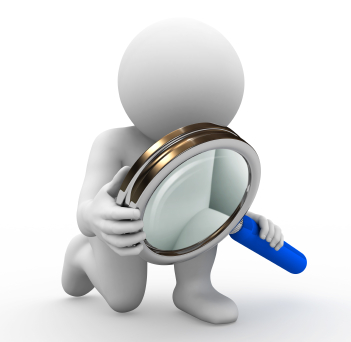Lease Audit: What to Look for During Real Estate Inspections
Mechanical inspections: check. Foundation inspection: check. Roof inspection: check. Lease audit: what?
The Lease Audit is listed right there on your property inspection checklist, but what is it, why do you need it, and where do you start?
The Lease Audit is an extremely important part of your due-diligence, but they are often overlooked during the property inspections. A lease audit is a physical inspection of the leases. A lease audit involves reviewing each lease to ensure that all appropriate steps have been taken and that they match the information is accurate. Most investors spend a great deal of time and effort inspecting the physical aspects of the properties, but only glance over the leases. This is a huge mistake.
The leases are an essential part of your real estate investment. Because you are buying an income generating investment and the leases determine how much income the property will generate, for how long, and how consistently, the lease audits are just as important as the physical inspections of the property.
The leases tell you a great deal about the cash flow, potential liabilities, and quality of the tenants that drive your investment. They can tell you about the stability of the investment and if you are buying what you thought you were. A quality lease audit is essential to the success of your investment. With that in mind, we’ve put together 10 key things you need to look for when doing lease audits of your next investment property.
10 Point Lease Audit Checklist for Investment Real Estate Inspections
- Verify lease amounts, dates, and signatures – Make sure to compare lease amounts and check that lease expiration dates match the rent roll. You also need to make sure all the leases are signed and that the signatures are unique from lease to lease. If the leases are a mess, the business you are buying is a mess.
- Double check security deposits– Confirm the amount of the security deposit for each lease and make sure they add up to the total security deposits for the property. The total amount of the security deposits should be transferred to you at closing. You need to make sure you get all the security deposit money you are owed. Either way, you will still be responsible for the security deposit obligation in the leases. Make sure you double check to make sure the total amount is correct.
- Determine Lease Exposure – The lease exposure is the percentage of leases that expire in any given month. It’s best to have them spread out evenly so that you don’t find yourself with a great deal of vacancy in any given month. This is very apparent in student housing where leases tend to expire around graduation and have to be released in a very small window. The more spread out they are, the easier it will be to keep the property full.
- Lease Terms – Determine how many leases are on what length of time or term. You can make changes to the lease terms of month-to-month leases quickly, but you can only make changes to year or six-month term leases when they come due. Month-to-month leases are great if you need to raise rent quickly, and year-long leases are typically more stable.
- Tenant Selection Criteria – Evaluate the tenant selection criteria the Seller used when leasing the apartments. Has the seller been doing background checks? Criminal and eviction checks? Do they have any selection criteria in place or were they just filling it with a warm body? This will tell you if the tenants they do have are strong or weak, or if you are going to have to “clean house” once you own the property.
- Get Tenant Ledgers – The tenant ledgers will have the payment history of each tenant. This will tell you if your tenants pay on time or are consistently late. Have they bounced checks? This will tell you how hard it will be to manage the collections of the property.
- Pending Tenant Actions – They should have records of any pending tenant actions such as late payments, evictions notices, or other notices. It’s important to get a list of these actions as you will be responsible for following through with them after closing.
- Contact Info – Make sure you have all the contact information for each tenant. This should include emergency contact information, car make and model, license plate information, etc.
- Special Deals/Concessions – It’s important to look for “special” terms and conditions in the tenant leases. This can include rental concessions or other aspects that are not standard on the lease. Here you can look for things like a “free” month’s rent, skipping payments, or other special conditions that the Seller might have used to fill the property before selling it.
- Unit type and number of tenants per unit – Last but not least make sure that the unit type (one-bedroom, two-bedroom, etc.) matches the leases and that the number of tenants in each unit adheres to the occupancy rules. Also make sure to note the number of each type of unit. I have seen cases where Sellers have stated that there are a specific number of a certain-sized unit only to find out that wasn’t the case after buying it. This can have a major impact on cash flow and income. It’s an easy thing to check during the lease audit, but is often overlooked.
As you can see, the leases are an extremely important aspect of your real estate investment. Making sure you not only perform physical inspections, but also thorough lease audits, will ensure that you make a fully-informed investment decision.


